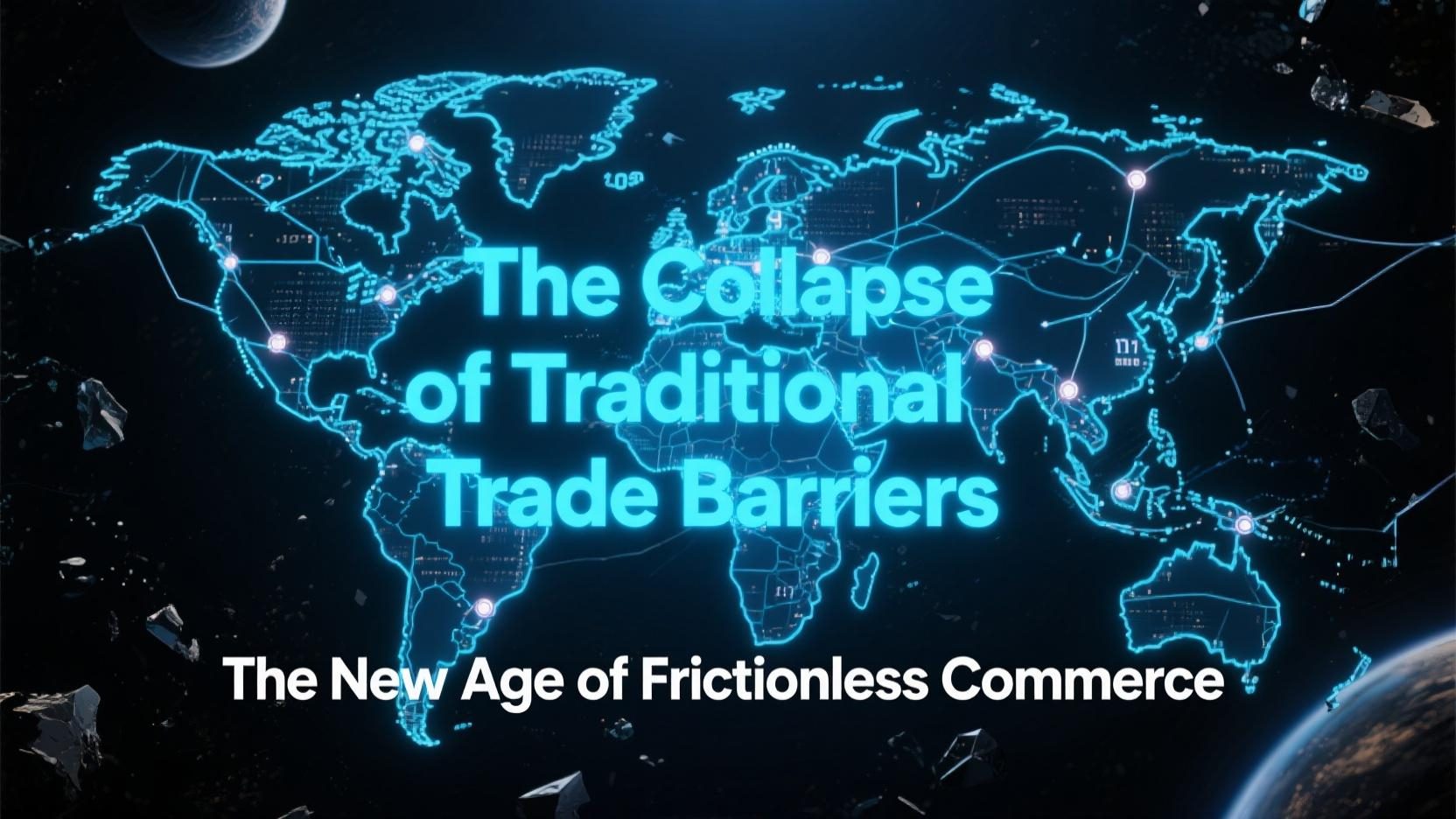Throughout history, commerce has been defined by borders — lines drawn across maps, lines that shaped nations and their economies. Yet in 2025, those lines are blurring, reshaping global commerce into an increasingly seamless network. The era of traditional trade barriers — tariffs, quotas, and paperwork — is giving way to frictionless commerce, powered by digital platforms, AI logistics, and instantaneous payments.
The End of Borders as Trade Chokepoints
For centuries, nations have relied on borders as gateways and toll booths for goods. Today, platforms like Amazon, Alibaba, and Shopify have rendered many traditional barriers irrelevant. An artisan in Lagos can now sell to a customer in Berlin, and an app developer in Jakarta can monetize across Silicon Valley — all in seconds.
With digital platforms acting as global marketplaces, traditional bottlenecks like customs, shipping delays, and clearance times have been replaced by algorithms and AI-driven logistics. The average global cross-border e-commerce delivery time has dropped from 15–30 days a decade ago to roughly 72 hours today.
New Infrastructure Enables Frictionless Trade
The backbone of this shift lies in digital infrastructure:
-
5G connectivity allows seamless communication between suppliers, carriers, and buyers across continents.
-
Blockchain smart contracts eliminate intermediaries, making payments automatic and trustless.
-
Artificial Intelligence predicts consumer demand and reshapes supply chains, making global commerce highly responsive and personalized.
The Challenges of Frictionless Trade
While global commerce has become more fluid, new tensions arise. Digital protectionism threatens access as nations implement data residency requirements, censorship, and digital taxes. Meanwhile, global platforms dominate marketplaces, making smaller firms reliant on their infrastructure and policies.
Another challenge is the growing risk of geopolitical weaponization of commerce. Export controls, digital embargoes, and cyber-attacks have replaced traditional naval blockades. In this era, access to servers and digital services can determine a nation’s economic fate.
The New Trade Order
The rise of frictionless commerce is reshaping global economic dynamics. The future of trade will hinge on digital access, data control, and technological agility. The nations and businesses that adapt to this shift — by building resilient digital infrastructure and aligning with global platforms — will dominate the new economic order.
For smaller nations and enterprises, this is both a challenge and an unprecedented opportunity. Frictionless commerce can enable access to global markets like never before, making geography and heritage no longer barriers to prosperity.
In the end, the collapse of traditional borders is not the end of global commerce — it is its rebirth. The winners of the next economic era will be those who can move as fast as the data that powers it.









